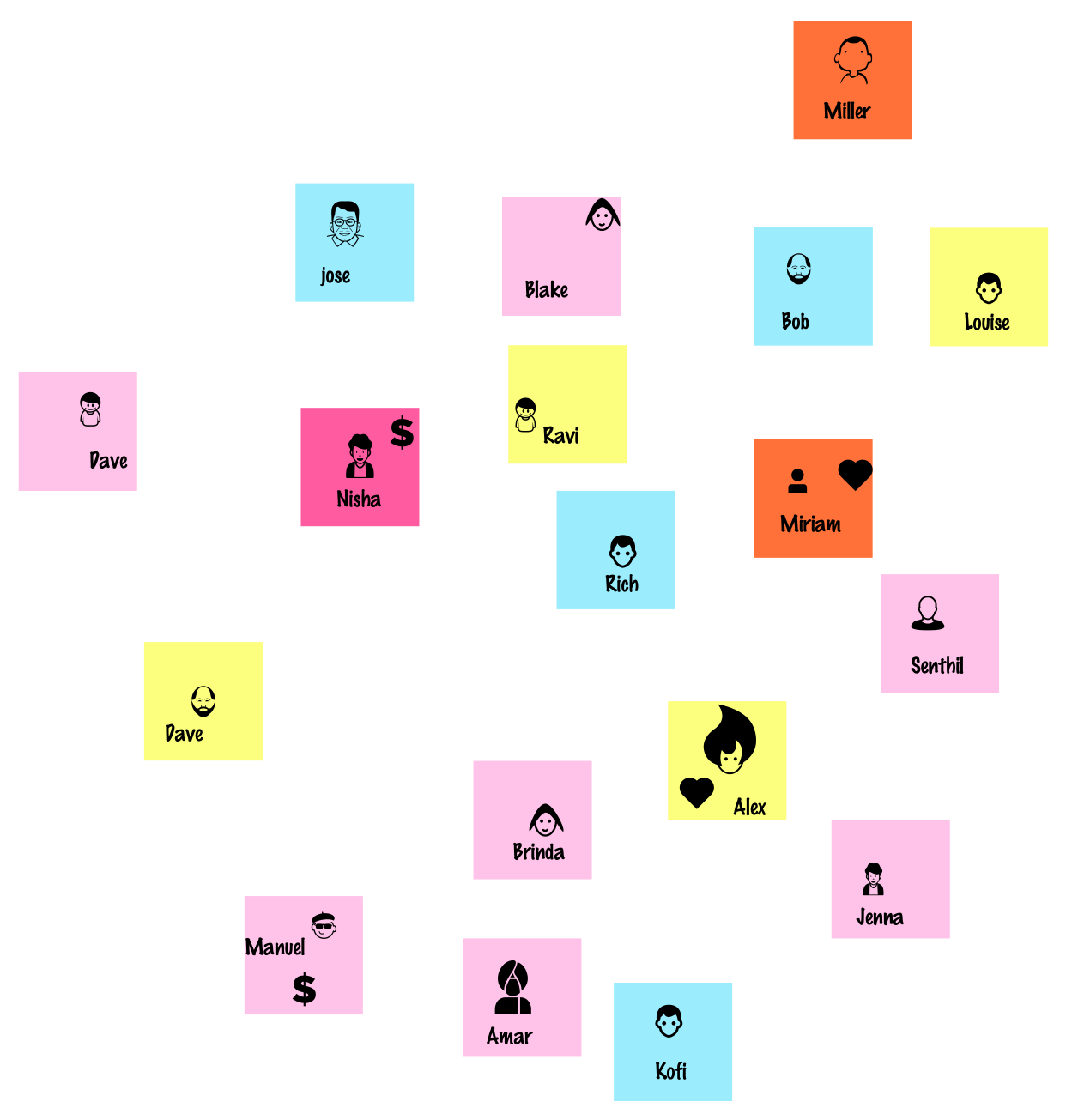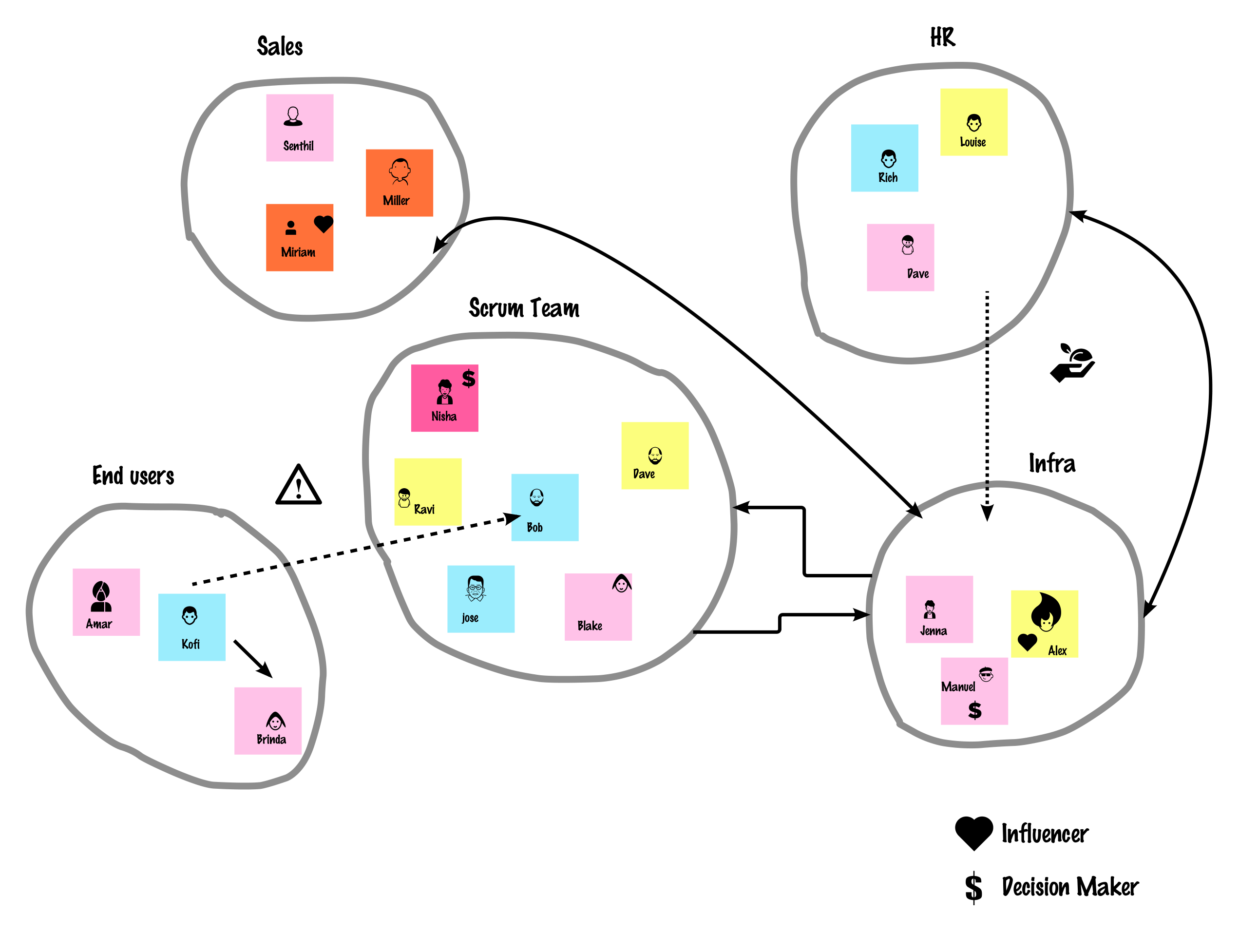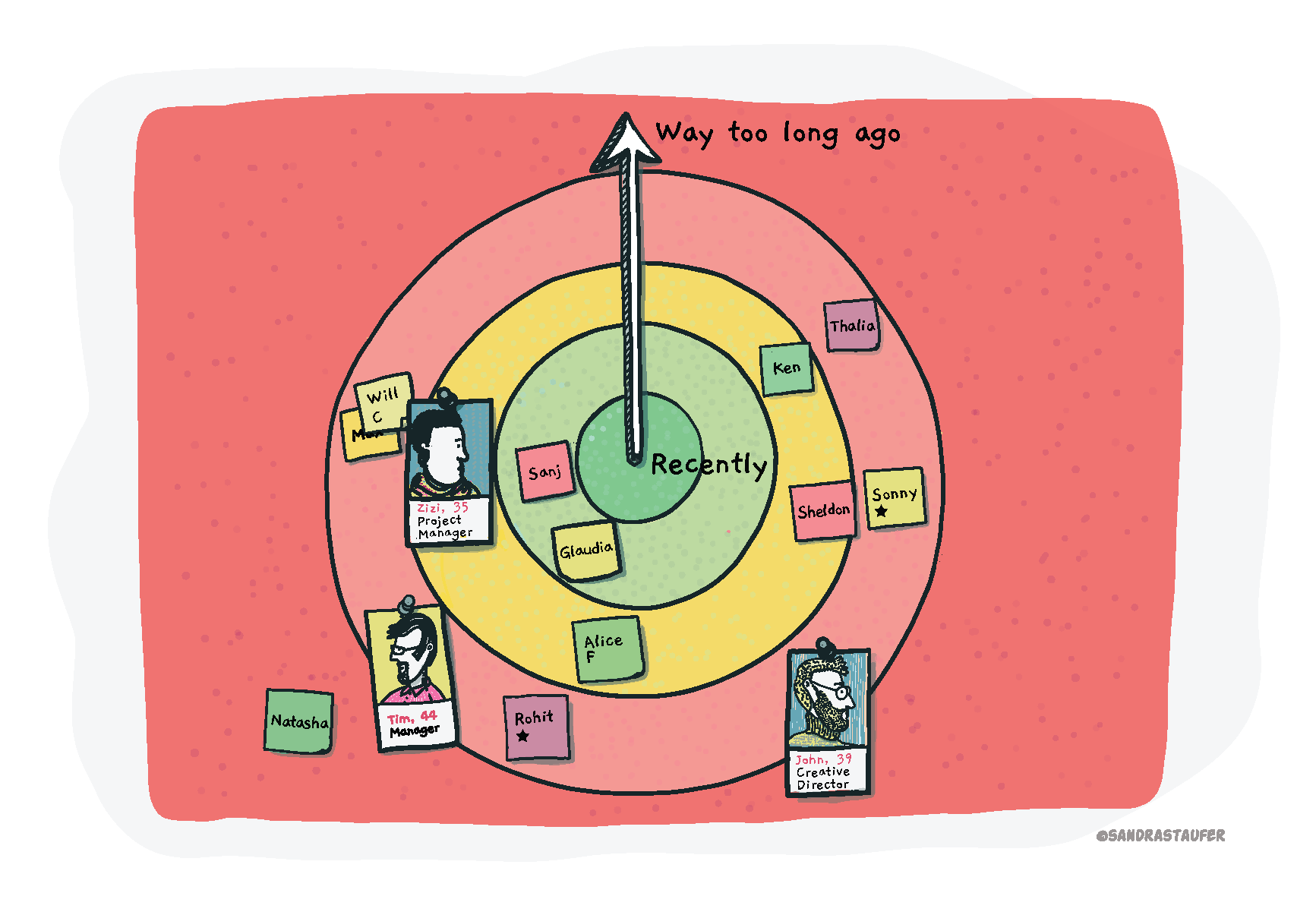Using Stakeholder Mapping to Collaborate
When it comes to Scrum Teams delivering value effectively, collaboration is key within the team and also externally. Scrum Teams should work closely with their stakeholders and engage and collaborate with them closely during the Sprint to gain valuable insights proactively. This enables them to inspect and adapt their product while developing increased trust, loyalty, and support between the Scrum Team and their stakeholders.
To effectively collaborate with your stakeholders, you first need to know who they are, what their needs are and what gets their attention. As a Scrum Master you can help increase effective stakeholder engagement and collaboration by bringing the team together to capture what you collectively know about your stakeholders. One way to do this is by facilitating a stakeholder mapping activity with the team.
The whole Scrum Team participates in this activity. The desired outcome is two-fold:
- Develop a shared understanding of the stakeholders needs and interests, and
- Note the relationships that exist between the Scrum Team and the stakeholders as well as the relationships the stakeholders have with each other.
An output of the activity is a stakeholder map that can help guide the team to involve the right stakeholders at the right time for feedback. The Stakeholder map produced in this activity is a living artifact that is likely to evolve and change. For example, depending on the Product Goal or where the product is in its life cycle, the team will need to collaborate with different stakeholders. The Scrum Team should complete a perfunctory stakeholder map as early as possible that they review and adapt regularly.
Stakeholder Mapping Activity Facilitation Guidelines for the Scrum Team
1. Identify Stakeholders
The first step in facilitating the creation of a stakeholder map is for the participants to identify and write down individual people who have a direct stake in the outcomes you are trying to achieve with your product like in Figure 1:
- Use (virtual) wall and sticky notes
- Do this first activity using individual silent writing
- One individual Stakeholder per sticky note
- Place sticky notes on the the (virtual) wall

Fig 1. Stakeholders identified by individual team members
Tip: Go beyond the Stakeholder’s name and role. Consider and if you can note their hopes, worries, goals and motivations to achieve those goals. This type of description clarifies why they are your stakeholders and what they care about.
2. Converge and Connect
Together, discuss and review the people you have identified. Is there overlap? Did you miss anyone? Group stakeholders together and label each group like in Figure 2. Team members can label the groups in a way that makes sense to them.
Initially, when doing the stakeholder activity try to include anyone you can think of, so you get a feel for the different relationships that exist. After all, the Scrum Team’s work will affect not only the team, but other teams such as sales, customer service, internal users and end users to name a few. Add everyone on the same map to start with and when the map evolves you can decide to reduce it.
You can also use this activity to understand how your team interacts with people and other departments that are not stakeholders. These people might be internal or external departments such as suppliers. Explore who interacts, impacts or is impacted by the Scrum Team. How do they interact with the team? How do they impact the team? How are they impacted by the team?
Tip: Discuss and visualize relationships between individual stakeholders and/or groups using lines, arrows and symbols. For example, are there certain connections between the stakeholders that impact their point of view? Are there dependencies? Is there friction between groups? Who makes decisions? Who Influences?

Fig 2. Stakeholders grouped together in themes
3. Keep it Visible
Share the map in a place where all team members can see it at any time. Refer to it to identify who you want to collaborate with at any point of time or who to invite for one of the Scrum Events, such as Sprint Review.
Tip: Keep both the Stakeholder mapping activity as the output of a map lightweight. Avoid investing too much time and effort in creating the perfectly detailed map. The purpose of this activity is to identify stakeholders, build empathy and set the team up for more effective stakeholder collaboration. Keeping the artifact lightweight will allow the Scrum Team to inspect and adapt it regularly without much overhead.
4. Bonus Activity: Keep Stakeholders engaged - How long has it been?
Time flies, and before a team knows it the next Sprint has arrived and an opportunity to collaborate more closely with their stakeholders is upon us.
Consider and visualize together with the team how long it has been since they have collaborated with their stakeholders. Draw a circle. At the center, note Stakeholders they have engaged with recently. The further away people place the stakeholders from the center means that they haven’t engaged with them in quite a while.
Revisit and address questions like, how can Developers collaborate with the Stakeholders during the Sprint and add value to the work that the team delivers? When is the last time Developers collaborated with a valuable stakeholder during the Sprint? When is the last time any team member spoke to a certain stakeholder?

Approved Image source: Mastering Collaboration in a Product Team
Illustration by Sandra Staufer https://sandrastaufer.com/
As we mentioned, note that the stakeholders and their level of required engagement changes, therefore check on this visualization regularly, like for example in your Sprint Reviews or Sprint Retrospectives, to ensure you collaborate with the right stakeholders at the right time.